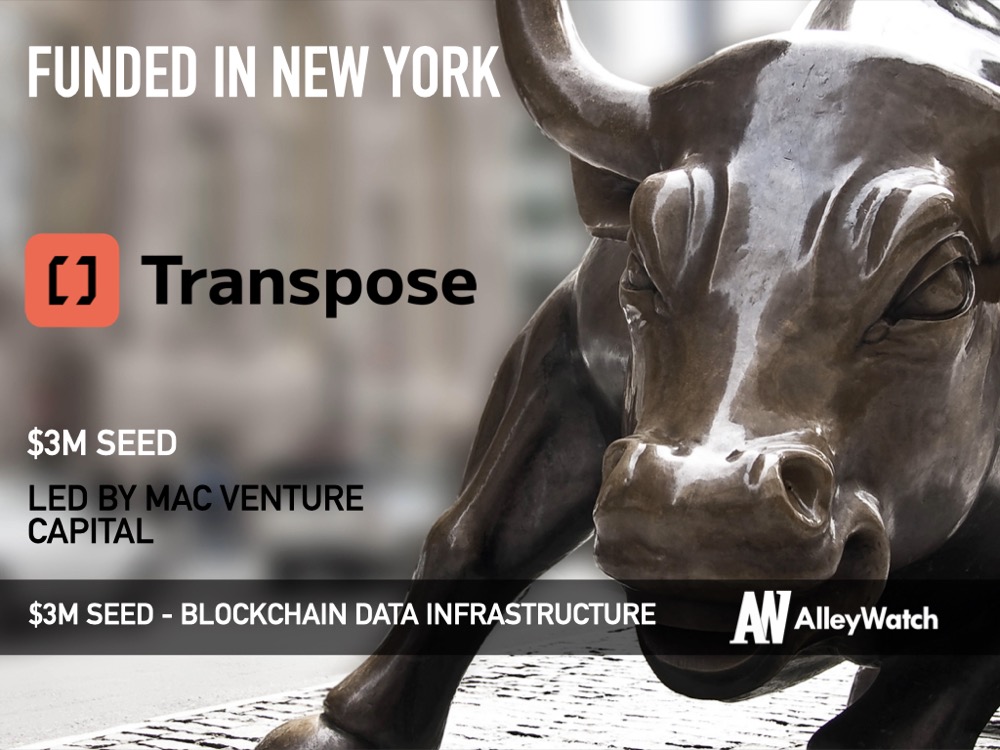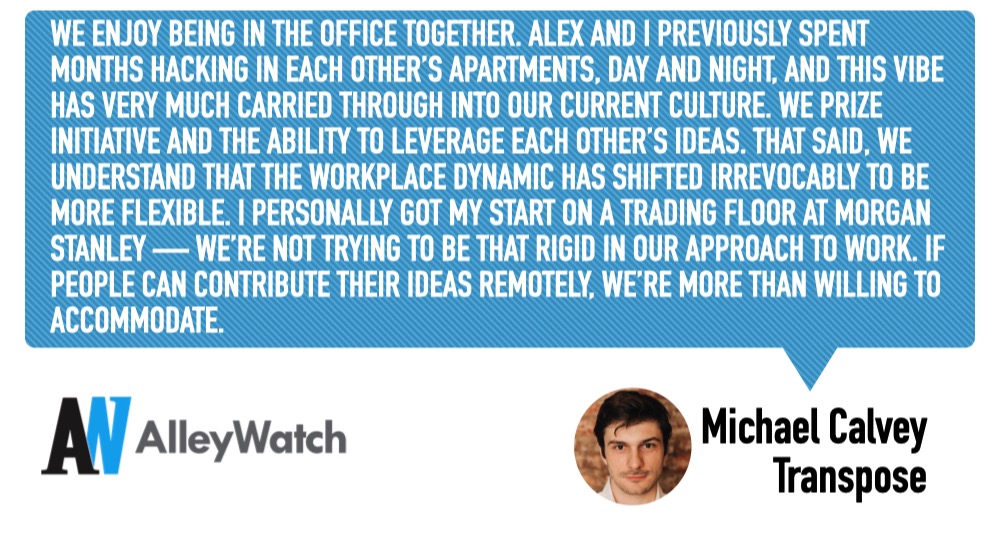While decentralization is one of the most significant benefits of the blockchain, having data in a number of disparate locations presents challenges for readily accessing data across different chains and applications. There hasn’t been a native querying solution that’s seamless and efficient to make data accessibility seamless for web3. Transpose is on a mission to address this with its suite of APIs that makes data across the blockchain ecosystem readily available. The company has developed four different APIs – Block for querying blocks, NFT for getting collection particulars, Token for looking up any fungible token and corresponding activity, and Wallet to fetch any wallet activity. By using Transpose’s infrastructure, blockchain developers can save hundreds of hours of manual querying and storing, while still being able to build truly decentralized applications. Presently, Transpose is free to use as the company is looking to initially integrate its stack across as many web3 developers as possible who are currently individually stymied trying to solve the data accessibility problem. As the infrastructure is versatile, chain agnostic, and can be used in countless use cases, Transpose in the future will be able to provide data-as-a-service to interested parties.
AlleyWatch caught up with Transpose Cofounder and COO Michael Calvey to learn more about the business, the company’s strategic plans, recent round of funding, and much, much more…
Who were your investors and how much did you raise?
We raised $3M from several VCs and several fantastic angels. MaC Venture Capital led the round and was joined by HOF Capital, Soma Ventures, and Pareto Ventures.
Tell us about the product or service that Transpose offers.
Transpose provides a suite of APIs that provide high-level, human-readable data across the entire blockchain landscape. The APIs are fast, straightforward, and flexible — designed to meet any web3 development need. This includes low-level blockchain data (i.e. blocks and transactions), asset layer data (i.e. NFTs and tokens), and account data (i.e. full wallet ownership and activity).
 What inspired the start of Transpose?
What inspired the start of Transpose?
The inspiration for Transpose came from a prior project Alex (cofounder) and I were working on. We were building a social metaverse platform called NFTY CTY and found ourselves bogged down in developing blockchain-related data infrastructure. After some reflection, we realized that this was a common yet avoidable problem — founders shouldn’t be spending weeks rebuilding the exact same infrastructure.
This led us to realize that a lot of the data pipelines we built for our own project could be repurposed and shared with the community. We spoke with several other founders in AllianceDAO, a web3 accelerator we were in at the time, and they echoed our pain points. We’ve evolved a lot since then into Transpose as it is today: a comprehensive blockchain data platform fit for enterprise use.
How is Transpose different?
We make web3 data truly simple to work with. Gone are the days of vast sets of cryptic hashes or long anonymized event logs. We make the data you need available, when you need it. Our vision is to empower everyone from builders creating their first projects to big institutions seeking actionable data to inform investment strategy.
What market does Transpose target and how big is it?
Eventually, we’re going to aim for the whole web3 market, but we’re starting tangibly by focusing on the use case we ourselves experienced — builders in web3 who may be unfamiliar with the complex web3 stack, making their first foray into building on the blockchain. The advantage of this approach is that we’re starting by tackling a very concrete market that we know well, then expanding to bigger exciting use cases like fraud detection, credit scoring, and financial data.
Eventually, we’re going to aim for the whole web3 market, but we’re starting tangibly by focusing on the use case we ourselves experienced — builders in web3 who may be unfamiliar with the complex web3 stack, making their first foray into building on the blockchain. The advantage of this approach is that we’re starting by tackling a very concrete market that we know well, then expanding to bigger exciting use cases like fraud detection, credit scoring, and financial data.
What’s your business model?
We’re primarily a B2B SaaS company, although for the foreseeable future we’re not going to charge for our service — we’re offering it completely free, provided people are willing to give some feedback. We want to build the best product we possibly can, so our focus, for now, is on gathering as much information on customer needs.
What are your post-COVID office plans??
We enjoy being in the office together. Alex and I previously spent months hacking in each other’s apartments, day and night, and this vibe has very much carried through into our current culture. We prize initiative and the ability to leverage each other’s ideas. That said, we understand that the workplace dynamic has shifted irrevocably to be more flexible. I personally got my start on a trading floor at Morgan Stanley — we’re not trying to be that rigid in our approach to work. If people can contribute their ideas remotely, we’re more than willing to accommodate.
What was the funding process like?
Everything accelerated very quickly. We started working on NFTY CTY in the late summer — mostly for fun, coding in the evenings and on weekends. By the start of winter, our original idea had really begun taking shape. We applied to a bunch of accelerators on a whim, mostly seeking validation for our ideas, which we had begun to suspect had more possibilities than we initially realized.
When we got into the AllianceDAO ALL7 cohort somewhat unexpectedly, we realized we had a big opportunity on our hands and really got to work. This key inflection point led to introductions with many amazing people, most critically Adrian Fenty at MaC Venture Capital, who went on to be our lead investor. Adrian and our other early backers understood the possibilities of what we had in mind very early in the process and stood behind us ever since.
What are the biggest challenges that you faced while raising capital?
The biggest challenge we faced at the time was the fact that we decided to pivot in the middle of our raise process. It was daunting going back to our initial investors to relay that we had found a bigger problem while building NFTY CTY. This dissipated quickly however because data accessibility turned out to be a crucial pain point in the web3 stack. In fact, in experiencing these problems ourselves first-hand as builders, we were able to grasp exactly how to approach solving it. It took us building a project with complex NFT functionality to understand just how dysfunctional web3 data really is today.
Our early investors were even more excited about the new data angle, which really helped push us to explore the new problem space as fully as possible. Without this initial effort it would have been much harder to dial in on the concrete problem we’re now solving.
What factors about your business led your investors to write the check?
One of the cool things about our business model is that it’s a hybrid of web2 and web3. We’re web3 native, with deep exposure to all verticals of the blockchain space, yet we are also a B2B SaaS company with a centralized data service. This will be an especially big factor as financial tightening percolates from public markets to mature startups to smaller startups like us.
What are the milestones you plan to achieve in the next six months?
We’ve got lots planned for the next six months. We’re launching our Open Alpha with four initial API offerings on the Ethereum blockchain in the next couple weeks, with the goal of gathering as much feedback as we possibly can. Once we land on a formula that really solves Ethereum’s data accessibility problems, we plan to parallelize massively and go multi-chain.
What advice can you offer companies in New York that do not have a fresh injection of capital in the bank?
Do everything you can to get started and survive without capital. Too many companies have aligned their scaling plans with the easy capital of the last few years. With rates on the rise and a much more turbulent outlook for public markets, VCs are adjusting their requirements in kind to ensure their returns aren’t compressed. This can be fatal to companies that are counting on a fresh injection of capital every 6-12 months, as this forces founders to raise a down round or risk the survival of the entire business.
Do everything you can to get started and survive without capital. Too many companies have aligned their scaling plans with the easy capital of the last few years. With rates on the rise and a much more turbulent outlook for public markets, VCs are adjusting their requirements in kind to ensure their returns aren’t compressed. This can be fatal to companies that are counting on a fresh injection of capital every 6-12 months, as this forces founders to raise a down round or risk the survival of the entire business.
Where do you see the company going now over the near term?
We’re starting out by building up critical infrastructure to ingest, process, and distribute blockchain data at scale. Once we accomplish this, we’ll shift focus to exploring how this data can be used to add specialized value to our users — essentially transforming customers into clients in the process. Our eventual goal is to provide use-case specific solutions (e.g. Web3 advertising, fraud detection, charts/analytics) rather than bulk raw data in isolation.
What’s your favorite outdoor dining restaurant in NYC?
This is a pretty tough decision, but I’d have to say Song’ E Napule on Houston.





